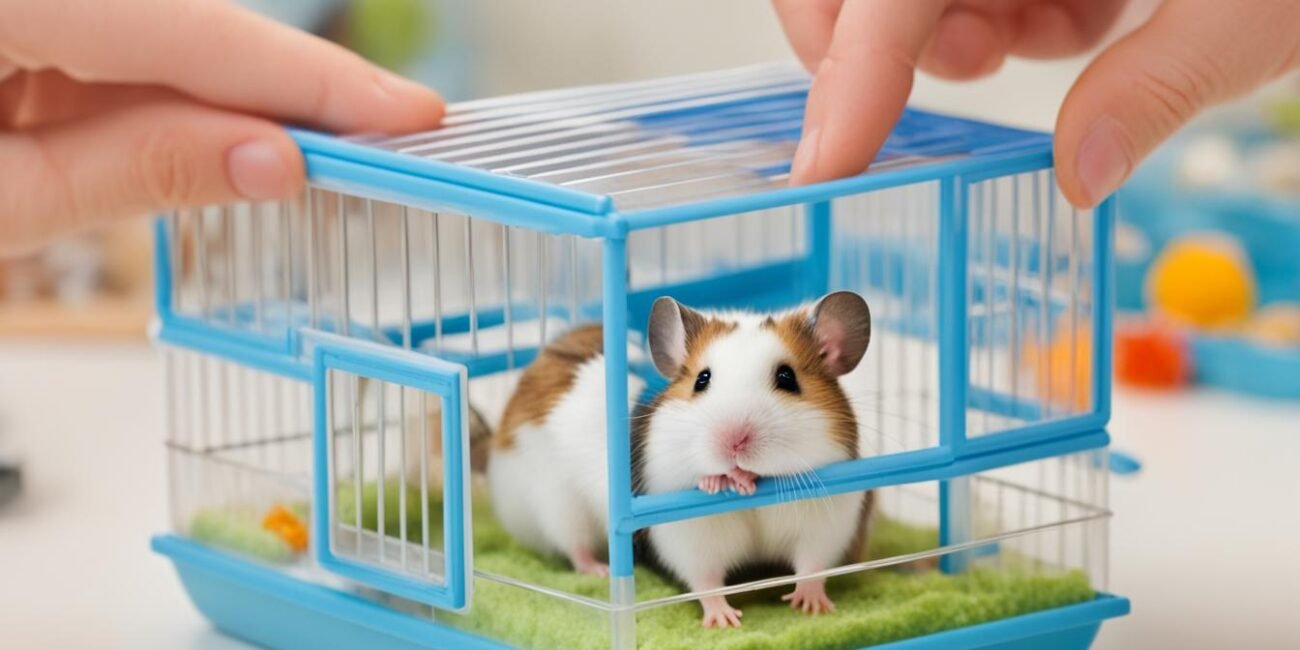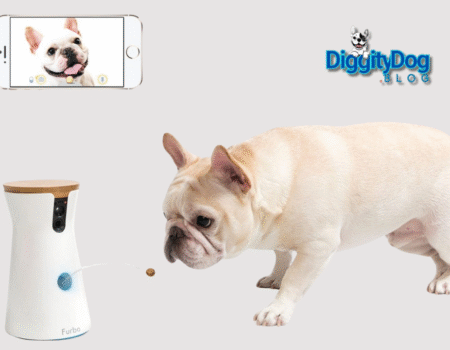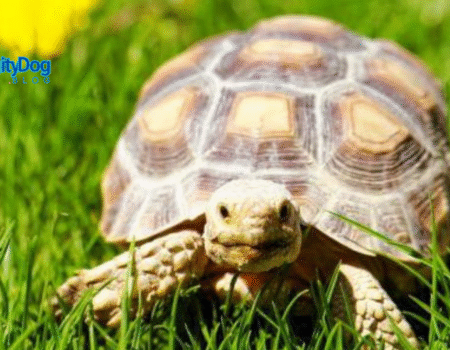Welcome to our beginner’s guide on choosing the right hamster! Whether you’re a child or an adult, hamsters make fantastic pets, and we’re here to help you make the best decision for your family. In this guide, we’ll provide you with tips and information on how to choose the perfect hamster to join your household.
Key Takeaways:
- Consider the different hamster breeds and their characteristics to find the best fit for your lifestyle.
- Gather all necessary supplies before bringing your new hamster home, including a suitable cage, bedding, food, and accessories.
- Pay attention to the health indicators of the hamsters you are considering, such as their fur condition, eyes, and general behavior.
- Take into account important factors like the level of care and interaction required, as well as any potential considerations for young children.
- Be aware of the costs associated with owning a hamster, both initial expenses and ongoing care.
Choosing the Breed
When it comes to hamster breed selection, you have several options to consider. Each breed has its unique characteristics and requirements, so it’s important to choose the breed that best fits your preferences and lifestyle. Let’s take a closer look at some popular hamster breeds:
Syrian Hamster
The Syrian hamster, also known as the golden hamster, is the most common and popular breed among pet owners. They are larger in size and known for their calm and docile nature, making them great for handling. Syrian hamsters also come in a variety of coat colors and patterns, adding to their appeal.
Roborovski Hamster
The Roborovski hamster, often referred to as the Robo hamster, is the smallest breed of hamsters. They are incredibly active and fast, making them more suitable for observation rather than handling. Robo hamsters are known for their energetic nature and can provide hours of entertainment with their playful antics.
Chinese Hamster
The Chinese hamster is another smaller breed of hamster, resembling a mouse-like appearance. They are generally more independent and enjoy having their own space. Chinese hamsters are known for their agility and are active climbers, so providing them with a multi-level cage or plenty of climbing toys is essential.
Campbell’s Dwarf Hamster
Campbell’s Dwarf hamsters are small and social animals. They enjoy having companions, so if you’re considering getting multiple hamsters, they are a good choice. They are known for their burrowing habits and love creating intricate tunnels in their habitat. Campbell’s Dwarf hamsters are relatively easy to handle and can make great pets.
Winter White Russian Dwarf Hamster
The Winter White Russian dwarf hamster closely resembles the Campbell’s Dwarf hamster in size and appearance. They are docile and friendly, making them suitable for handling. One standout feature of the Winter White Russian dwarf hamster is its ability to change its coat color from dark gray in the winter to a white color in the colder months.
“The key to choosing the right hamster breed lies in understanding their individual characteristics and meeting their specific needs. Take the time to research and interact with different breeds to find the perfect companion for you.”
Breed Comparison Table
| Breed | Size | Nature | Handling | Activity Level |
|---|---|---|---|---|
| Syrian Hamster | Large | Calm and docile | Great for handling | Moderate |
| Roborovski Hamster | Small | Energetic and fast | Observation-focused | High |
| Chinese Hamster | Small | Independent | Less suitable for handling | High |
| Campbell’s Dwarf Hamster | Small | Social and friendly | Suitable for handling | Moderate |
| Winter White Russian Dwarf Hamster | Small | Docile and friendly | Suitable for handling | Moderate |
What Supplies Do I Need to Get?
Before bringing home a new hamster, it’s essential to gather all the necessary supplies to ensure their comfort and well-being. Here’s a list of the must-have items to start your hamster journey:
Cage
A suitable hamster cage is vital for providing a safe and spacious environment for your furry friend. Choose a cage that allows sufficient room for them to run, explore, and play. Opt for one with sturdy construction and good ventilation.
Bedding
Provide your hamster with a cozy and comfortable living space by selecting the right hamster bedding. Consider options like wood shavings or paper bedding to ensure proper absorption and odor control.
Food
A nutritious and balanced diet is important for your hamster’s health. Purchase high-quality hamster food that includes a mix of grains, seeds, fruits, and vegetables. Avoid foods that contain high sugar content.
Accessories
Enhance your hamster’s habitat with a variety of hamster accessories. These can include a water bottle for hydration, a food bowl for easy feeding, a hideout for privacy, an exercise wheel for physical activity, and toys for mental stimulation.
| Supplies | Recommended Options |
|---|---|
| Hamster Cage | Wire cage with plastic bottom |
| Bedding | Wood shavings or paper bedding |
| Food | High-quality hamster food mix |
| Accessories | Water bottle, food bowl, hideout, exercise wheel, toys |
Remember, providing the right supplies not only ensures your hamster’s physical well-being but also promotes their mental stimulation and overall happiness. Creating a comfortable and enriching environment will allow them to thrive as part of your family.
Cage Selection
Choosing the right cage is crucial for the comfort and well-being of your hamster. Here are some important factors to consider:
Hamster Cage Size
Make sure to provide your hamster with an adequate living space. The minimum cage size should be at least 10 gallons, but bigger is always better. A spacious cage allows your hamster to explore and exercise, promoting their physical and mental health.
Wire Cage with Plastic Bottom
Opt for a wire cage with a plastic bottom. This combination provides the best of both worlds – the wire design allows for good air circulation and ventilation, while the plastic base makes cleaning easier and prevents any small debris from falling out of the cage.
Cage Ventilation
Your hamster’s cage should have proper ventilation to ensure fresh air supply. Good ventilation helps to regulate humidity levels and prevent the buildup of ammonia from waste products. It also keeps your hamster’s living environment clean and odor-free.
Avoiding Tall Cages
Hamsters are not skilled climbers, so it’s important to avoid tall cages. Falling from a height can cause serious injuries to your hamster. Opt for a cage with a wide and spacious layout instead, allowing your hamster to move comfortably at ground level.
Quiet Room for the Cage
Place your hamster’s cage in a quiet room without drafts or excessive noise. Hamsters are sensitive to loud sounds and sudden temperature changes, which can stress them out. Providing a calm environment helps your hamster feel safe and secure.
By considering the size, design, ventilation, and location of the cage, you can create a comfortable and stress-free living space for your furry friend.
| Factors to Consider | Recommendations |
|---|---|
| Cage Size | Minimum cage size of at least 10 gallons |
| Wire Cage with Plastic Bottom | Provides good ventilation and easy cleaning |
| Cage Ventilation | Ensures fresh air supply and prevents odors |
| Avoiding Tall Cages | Prevents potential injuries from falls |
| Quiet Room for the Cage | Provides a calm and stress-free environment |
Bedding Options
When it comes to providing a comfortable and cozy environment for your hamster, choosing the right bedding is crucial. There are several options available, each with its own advantages and considerations. Let’s explore the different hamster bedding materials:
1. Shredded Paper
Shredded paper is a popular and cost-effective choice for hamster bedding. It is readily available and easy to replace. The texture of the shredded paper provides a soft and comfortable surface for your hamster to burrow in. However, it’s important to use plain, untreated paper without any ink or chemicals that could be harmful to your pet. Regular cleaning and changing of the bedding are necessary to maintain cleanliness and prevent odor buildup.
2. Aspen Shavings
Aspen shavings are another common bedding option. They are made from the wood of aspen trees and are known for their absorbency and odor control properties. The shavings create a natural and comfortable bedding material for your hamster. Always use aspen shavings specifically made for small animals, as other types of wood shavings may contain oils or chemicals that can be harmful to your pet’s respiratory system.
3. Wood Pulp
Wood pulp bedding is made from recycled paper, providing a soft and absorbent surface for your hamster. It is dust-free, which is beneficial for hamsters with respiratory sensitivities. The wood pulp bedding is biodegradable and eco-friendly. However, some hamsters may have allergies or sensitivities to wood pulp, so you should monitor your pet’s reaction and consult a veterinarian if any issues arise.
Remember that regardless of the bedding material you choose, cleanliness and hygiene are important for the well-being of your hamster. Regular spot cleaning and complete bedding changes are necessary to maintain a clean and odor-free habitat for your furry friend.
In conclusion, shredded paper, Aspen shavings, and wood pulp are all viable options for hamster bedding. Consider the specific needs and preferences of your hamster when selecting the most suitable bedding material. Experimentation may be needed to find the bedding that works best for you and your hamster’s comfort.
| Bedding Material | Advantages | Considerations |
|---|---|---|
| Shredded Paper | Cost-effective, soft texture, readily available | Regular cleaning needed, avoid ink or chemicals |
| Aspen Shavings | Good absorbency, natural and comfortable, odor control | Use specific small animal aspen shavings, avoid other types of wood |
| Wood Pulp | Soft and absorbent, dust-free, eco-friendly | Monitor for allergies or sensitivities |
Choosing the Right Food
When it comes to your hamster’s diet, it’s important to provide them with a healthy and balanced meal plan. You have the option to choose between natural fresh foods or prepackaged hamster food, depending on your preferences and availability. Let’s explore the benefits of each option and the importance of incorporating healthy treats into their diet.
Natural Fresh Foods
Giving your hamster a diet of natural fresh foods can be a great way to provide them with essential nutrients and variety. Include a mix of fruits, vegetables, and herbs to ensure a well-rounded meal. However, it’s important to introduce new foods gradually, as sudden changes can upset their digestive system.
- Offer sliced fruits like apples, pears, and melons as healthy treats that are rich in vitamins and antioxidants.
- Leafy greens such as lettuce, spinach, and kale can be added to their diet to provide necessary fiber.
- Carrots and broccoli can serve as crunchy treats that help to wear down their teeth, promoting dental health.
Remember, moderation is key when it comes to treats. Too many fruits and vegetables can lead to digestive issues, so make sure to balance their intake with their regular diet.
Prepackaged Hamster Food
If you prefer a more convenient option, prepackaged hamster food is readily available in pet stores. These diets are specially formulated to meet your hamster’s nutritional needs and offer a balanced blend of seeds, grains, and pellets.
- Look for high-quality brands that offer a mix of ingredients to ensure a well-rounded diet.
- Check the label for the recommended feeding guidelines and adjust portion sizes according to your hamster’s weight and activity level.
Healthy Treats for Teeth Health
Hamsters’ teeth are constantly growing, so providing them with hard treats is important for their dental health. These treats help wear down their teeth and prevent them from becoming overgrown.
Offer hard treats like wooden chews or mineral blocks, which will encourage your hamster to chew and keep their teeth in good condition.
Incorporating a combination of natural fresh foods, prepackaged hamster food, and healthy treats into your hamster’s diet will ensure they receive a well-balanced and nutritious meal. Remember to always provide fresh water and clean their food bowls regularly.
Important Considerations for Hamster Health
Keeping an eye on your hamster’s health is crucial. As responsible pet owners, it’s important to recognize and address any potential health issues promptly. Here are some symptoms to watch for:
- Dull fur: If your hamster’s fur appears lackluster or unkempt, it could be a sign of an underlying health problem.
- Wet nose: A constantly wet or runny nose may indicate an upper respiratory infection or other respiratory issue.
- Hair loss: Excessive hair loss, especially in patches, could be a sign of a skin condition or mite infestation.
- Bad teeth: Overgrown or misaligned teeth can cause pain and difficulty chewing. Keep an eye out for signs of dental problems, such as drooling or decreased appetite.
- Cloudy eyes: Cloudiness or other abnormalities in your hamster’s eyes may be indicative of an eye infection or injury.
If you notice any of these symptoms, it’s important to contact a veterinarian with experience in exotic pets like hamsters. A qualified vet will be able to assess your hamster’s health and provide appropriate treatment.
Regular monitoring and veterinary care are essential to ensure your hamster’s well-being. By staying vigilant and addressing any health concerns promptly, you can help your furry friend live a happy and healthy life.
Getting to Know Your Hamster’s Health
Regular health checks are essential to ensure the well-being of your hamster. By monitoring their health regularly, you can catch any potential issues early and provide the necessary care. Here are some important aspects to check when assessing your hamster’s health:
- Personality check: Observe your hamster’s behavior and activity level. They should be alert, curious, and active. Any sudden changes in behavior or signs of lethargy could indicate an underlying health problem.
- Physical health check: Examine your hamster’s body for any visible signs of distress. Look for discharge in the eyes, nose, or ears, as this may indicate an infection. Additionally, check their scent glands to ensure they are clear and not swollen or infected.
- Loss of fur: Pay attention to any unexplained hair loss or changes in coat quality. A healthy hamster should have a full, glossy coat.
- Perked up ears: Healthy hamsters typically have perked up ears. If their ears appear droopy or inflamed, it may be a sign of an ear infection.
- Checking teeth: A hamster’s teeth should be clean, aligned, and not overly long. Dental problems can cause difficulty in eating, leading to weight loss, so it’s crucial to monitor their dental health.
If you notice any abnormalities or signs of illness during these regular health checks, it’s important to consult a veterinarian who specializes in small animals. Regular veterinary care is crucial to ensure your hamster’s well-being and longevity.
Choosing the Right Type of Hamster for Children
When it comes to selecting a hamster for children, it’s essential to choose a breed that is child-friendly, sociable, and can be handled gently. Among the various breeds available, Syrian hamsters are an excellent choice for children, as they are known for their friendly nature and adaptability to gentle handling.
Syrian hamsters are one of the most popular pet hamster breeds and are often recommended as ideal pets for families with children. They have a calm temperament, making them well-suited for interacting with young ones. While they may be initially shy, consistent and patient handling can help them become accustomed to human touch.
It’s important to teach children how to handle these small pets gently and responsibly. Children should be supervised while holding the hamster to ensure its safety and well-being. Gentle handling, such as supporting the hamster with cupped hands and avoiding sudden movements, is crucial to prevent stress or injury to the hamster.
Syrian hamsters are known for their friendly nature and adaptability to gentle handling.
Introducing children to these sociable hamsters can be a wonderful way to teach them about responsibility and empathy towards animals. Caring for a hamster can help children develop nurturing skills and learn to respect the needs and boundaries of their tiny furry friend.
Remember, each hamster has its own personality and preferences, so it’s important to spend time observing and interacting with them before making a final decision. Developing a bond with your hamster is both rewarding and fulfilling for both children and adults alike.
Cost of Owning a Hamster
Owning a hamster can be a wonderful experience, but it’s essential to consider the costs involved. From the initial purchase of the hamster to the ongoing expenses of providing proper care, there are financial commitments to be aware of. Let’s break down the various costs that come with owning a hamster.
Hamster Price Range
The cost of purchasing a hamster can vary depending on the breed and where you acquire it. On average, hamsters can range in price from $10 to $30. Some specialty breeds or rare color variations may be more expensive. It’s important to research reputable breeders or adoption centers to ensure you’re getting a healthy and well-cared-for hamster.
Cage and Accessories Cost
A suitable cage is crucial for your hamster’s well-being. A basic wire cage with a plastic bottom can cost between $25 and $50. However, larger or more elaborate cages with multiple levels and accessories like tunnels and platforms can cost up to $100 or more.
Here’s an example of the cost of a hamster cage and accessories:
| Item | Price |
|---|---|
| Wire Cage with Plastic Bottom | $40 |
| Water Bottle | $5 |
| Food Bowl | $5 |
| Hideout | $10 |
| Exercise Wheel | $15 |
| Toys | $10 |
| Total | $85 |
Ongoing Expenses
Aside from the initial costs, there are ongoing expenses to consider when owning a hamster. These expenses include food and bedding.
- Hamster food: A bag of hamster food typically costs around $5 to $15, depending on the brand and size. This should last for several weeks.
- Bedding: The cost of bedding will depend on the type and brand you choose. A package of bedding can range from $5 to $20, and you may need to replace it every two to three weeks.
Cleaning and Maintenance
Keeping your hamster’s cage clean is essential for their health. Regular cleaning and maintenance ensure a clean and safe environment for your furry friend. Here are some important cleaning tasks to include in your hamster care routine:
- Hamster Cage Cleaning: Clean the entire cage thoroughly to remove any dirt, bacteria, or odor. Use appropriate cleaning products that are safe for your hamster. Avoid using harsh chemicals or strong scents that could be harmful to your pet.
- Regular Bedding Change: Change the bedding in your hamster’s cage regularly to maintain cleanliness. Bedding should be clean, dry, and free from mold or mildew. Depending on the type of bedding you use, it may need to be changed weekly or every few days.
- Cleaning Water Bottle: Clean your hamster’s water bottle regularly to prevent bacteria build-up. Use a small brush or bottle-cleaning kit to scrub the inside of the bottle. Rinse thoroughly with clean water before refilling.
- Weekly Cage Cleaning: Set aside time each week to perform a thorough cleaning of your hamster’s cage. Remove all toys, accessories, and bedding. Clean the cage with mild soap and water, rinsing thoroughly. Allow the cage to dry completely before adding fresh bedding and returning your hamster’s belongings.
Remember, cleanliness is key when it comes to your hamster’s well-being. By incorporating regular cleaning and maintenance into your routine, you can ensure a healthy and happy habitat for your pet.
Cleaning and Maintenance Schedule
| Task | Frequency |
|---|---|
| Hamster Cage Cleaning | Every 2 weeks |
| Regular Bedding Change | Weekly |
| Cleaning Water Bottle | Every 3 days |
| Weekly Cage Cleaning | Once a week |
Conclusion
Owning a hamster can be a rewarding experience for those looking for a pet that is low-maintenance and great for beginners. By following this beginner’s guide to choosing a hamster and providing proper care, you can ensure a happy and healthy life for your furry friend.
First and foremost, it’s important to choose the right breed of hamster that suits your lifestyle and preferences. Whether you opt for the calm and easy-to-handle Syrian hamster or the energetic and social Roborovski hamster, make sure to research and select the breed that best matches your needs.
Next, gather all the necessary supplies to create a comfortable environment for your hamster. This includes a suitable cage, bedding, food, and accessories. Remember to choose a wire cage with a plastic bottom for easy cleaning and good ventilation.
Lastly, maintain your hamster’s health by regularly checking for any signs of illness or discomfort. Keep an eye out for symptoms such as dull fur, wet nose, hair loss, bad teeth, or cloudy eyes. If you notice any issues, consult a veterinarian for proper care and treatment.
With the right knowledge and resources, you can provide the best care for your pet hamster and enjoy a fulfilling experience of hamster ownership. So dive into the wonderful world of hamsters and create a loving bond with your new furry companion!
FAQ
How do I choose the right hamster?
When choosing a hamster, consider factors such as breed, temperament, and handling. Syrian hamsters are a popular choice for their calm nature, while other breeds like Roborovski and Chinese hamsters may require more experienced handling.
What supplies do I need to get for my hamster?
You will need a cage, bedding, food, and accessories like a water bottle, food bowl, hideout, exercise wheel, and toys.
What type of cage should I choose for my hamster?
A wire cage with a plastic bottom is recommended for easy cleaning and good ventilation. Make sure the cage size is at least 10 gallons and avoid tall cages, as hamsters are not good climbers. Place the cage in a quiet room without drafts.
What bedding options are available for hamsters?
Hamsters can use shredded paper, Aspen shavings, or wood pulp as bedding. Each has its pros and cons, so experiment to find the one that works best for you and your hamster.
What should I feed my hamster?
You can choose to feed your hamster a diet of natural fresh foods or opt for prepackaged hamster food. It’s important to provide healthy treats in moderation, such as sliced fruits and hard treats to keep their teeth in check.
How do I keep track of my hamster’s health?
Watch out for symptoms such as dull fur, wet nose, hair loss, bad teeth, and cloudy eyes. If you notice any of these symptoms, contact a veterinarian for proper care.
How should I check my hamster’s health regularly?
Regular health checks should include looking for any discharge in the eyes, nose, or ears, signs of lethargy, clear scent glands, loss of fur, perked up ears, and the condition of their teeth. If you notice any issues, consult a veterinarian.
What type of hamster is best for children?
When choosing a hamster for children, consider a breed that is friendly and can be handled gently. Syrian hamsters are known to be great for children once they are accustomed to handling.
How much does it cost to own a hamster?
Owning a hamster comes with costs such as the initial price of the hamster, cage, and accessories, as well as ongoing expenses for food and bedding. Consider the financial commitment before getting a hamster.
How do I clean my hamster’s cage?
Keeping your hamster’s cage clean is essential for their health. Use appropriate cleaning products, change bedding regularly, clean the water bottle, and perform weekly cage cleaning to maintain a clean and safe environment for your hamster.
How do I best care for my hamster?
Owning a hamster can be a rewarding experience when you have the right knowledge and resources to provide proper care. Remember to choose the right breed, gather necessary supplies, maintain their health, and enjoy your time with your furry friend.










No Comment! Be the first one.